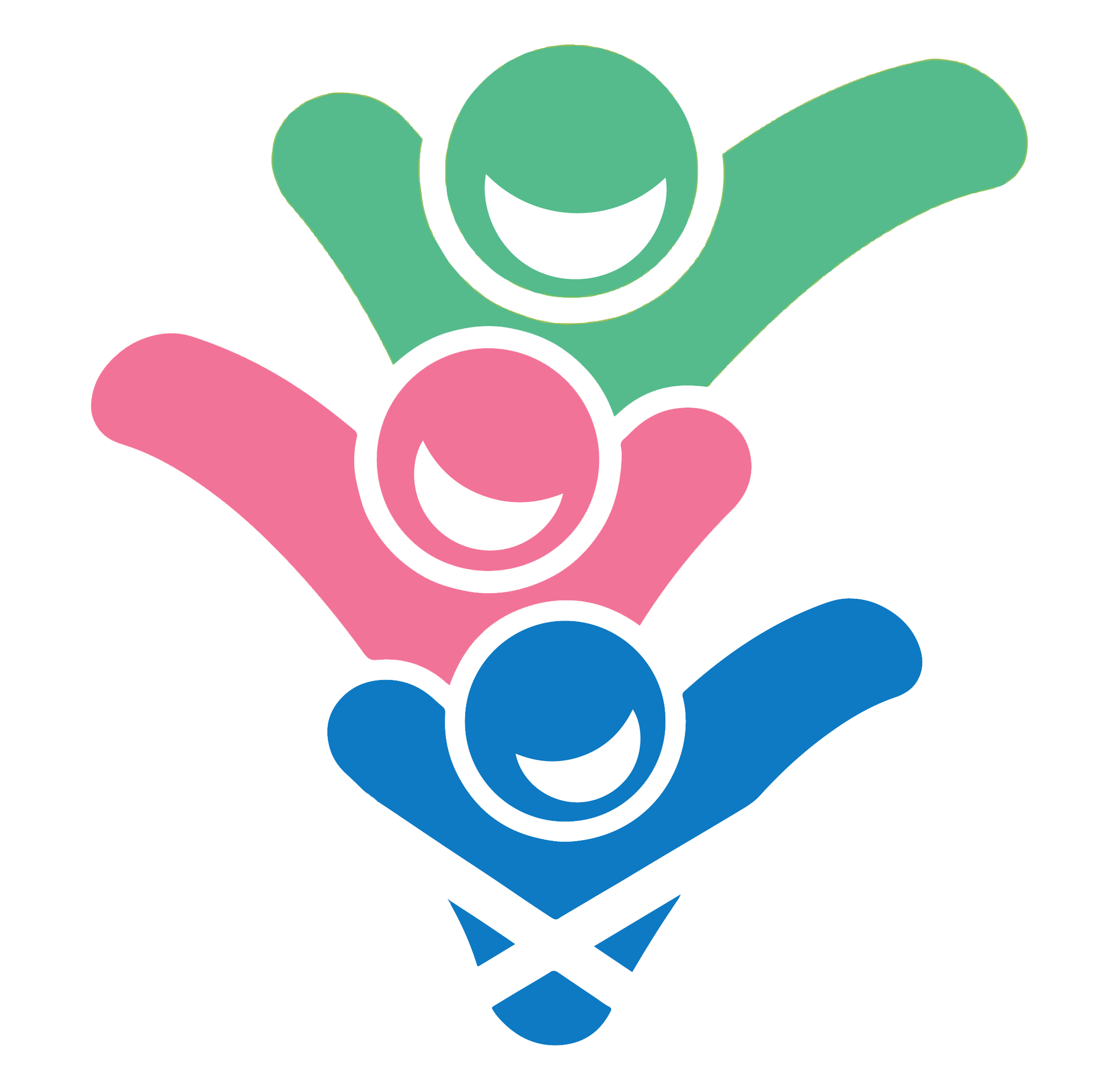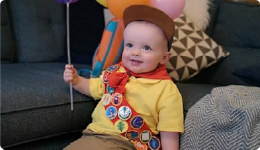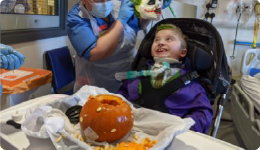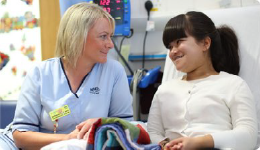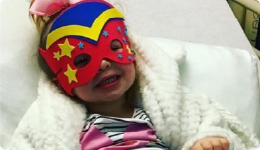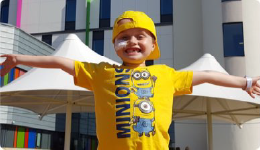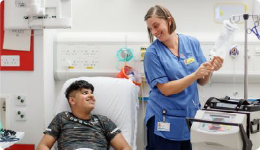Dressing
Your toddler can undress themselves but will still need help with fastenings. Keep letting your toddler practice getting dressed and undressed. Make it fun - get them to put your clothes on while you try putting theirs on.
Teaching the last step first is a teaching technique, called backward chaining, that can help children learn how to do complicated tasks. Backward chaining is when you break a task down into it's different steps and then teach the last step first. Once the child can do the last step you teach the second last step and so on until they can do every task. It works great for teaching dressing skills.
If we think about a putting on a t-shirt, to start with you would follow these steps:
- you would get the t-shirt the right way round and ready to put on
- you would pull the t-shirt over their head
- you would help them get their arms into the sleeves
- your child would pull the t-shirt down.
You repeat this until your child pulls the t-shirt down every time. They might learn this quickly or it might take some time. Keep practicing every time you are changing your child. Next you want them to put their arms into the sleeve and pull the t-shirt down. Once they can do that every time, you hand them the t-shirt ready to put on and get them to put it over their head, put their arms into the sleeves and then pull the t-shirt down. Choose one garment at a time to work on.
Learning to get the clothes the right way round is really hard so this will be the last step they learn and it will take a long time to master this so focus on just putting the clothes on.
You could also start to show them how to undo big buttons and zips.
Eating and Drinking
Your toddler can use a spoon to feed themselves, they might still be a bit messy though. You could now teach your toddler to use a fork. Let them try using a fork at mealtimes but play with forks too. Give your toddler a fork while you are cooking. Involve them in simple food preparation, baking and cooking activities. Toddlers love to copy their care givers. There are ideas about Cooking at Home at different stages on the British Dietetic Associations website. CBeebies Parenting also have some information about cooking with toddlers. Shopping is a great time to explore food too. CBeebies Parenting have some activity ideas for at the supermarket.
Going to the toilet
Your toddler might be using the toilet or potty with your help. Lots of children find learning this skill challenging though so don't worry if your toddler hasn't got the hang of this yet. For children with additional support needs the journey might look different and may take longer. Take it at your child's pace. You can teach your child how to wash their hands even if they aren't using the toilet or a potty. You can also teach them to take their clothes down and their nappy/pull up off. Look at our toileting page for more information.
Teeth Brushing

Brushing your teeth is an essential part of looking after your body. You should be brushing your child's teeth at least twice a day. You can find out more from:

